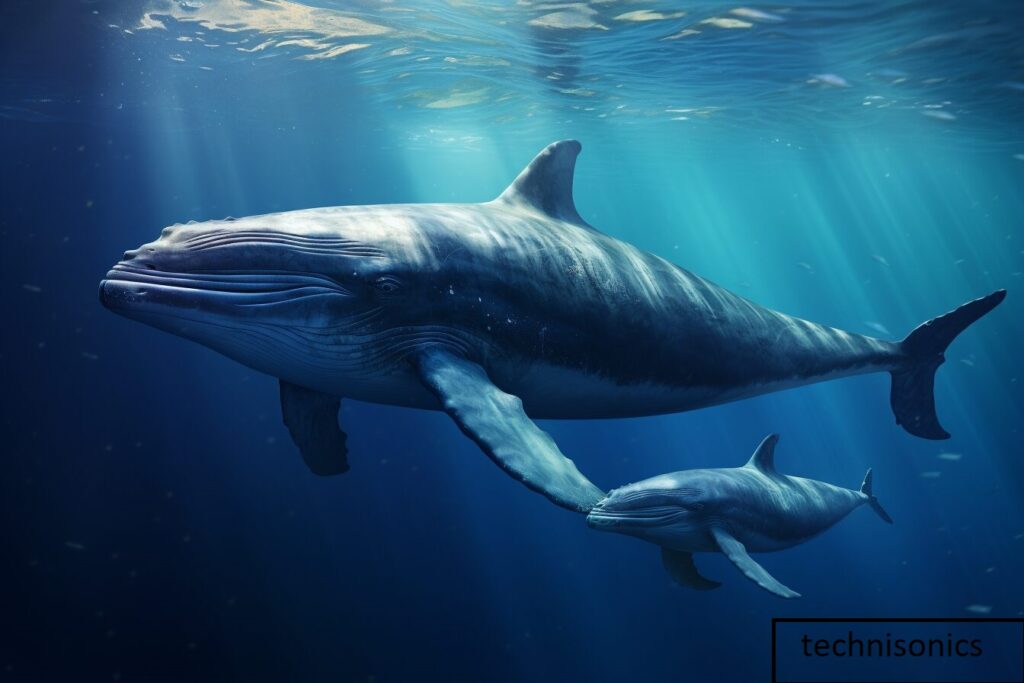Introduction
In April 2021, a rare blue whale was found washed up on a beach in Namibia, having been cut in half (blue whale bitten in half). The whale was first spotted upside down off the port town of Walvis Bay, and its body drifted ashore with a broken pectoral fin. The evidence suggests that the whale was struck by a ship close to the bay.
What is the maximum population of blue whales?
The maximum population of blue whales before industrial whaling is estimated to have been over 350,000. Today, the population is estimated to be between 10,000 and 25,000.
The Myth of Blue Whale Bitten in Half
The idea of a blue whale bitten in half might sound intriguing, but it is rooted more in myth than fact. Blue whales, given their enormous size, have few natural predators. While killer whales and sharks may target young or weak blue whales, it is highly unlikely for any predator to bite an adult blue whale in half(blue whale bitten in half). However, such sensational phrases often arise from misunderstood events or exaggerations in storytelling.
Blue Whale Bitten in Half Fascinating Insights Into Blue Whales and Their Conservation
Blue whale bitten in half is a phrase that might seem startling, but it brings attention to the fascinating world of these magnificent creatures and the threats they face. As the largest animal ever to have lived on Earth, the blue whale inspires awe and curiosity. This article explores their unique characteristics, the challenges they encounter, and ongoing efforts to ensure their survival.
The Blue Whale Challenge
The Blue Whale Challenge began as a Blue Whale Bitten in Half hoax but soon became problematic when it was exploited to encourage self-harm among young people. Though no solid evidence confirms the challenge’s existence, several children claimed participation. The challenge gained notoriety through sensationalized media, isolating victims and making them susceptible to manipulation by curators who could access their personal information for blackmail.
Blue Whale Skeletons
Blue whale skeletons are prized exhibits in museums, showcasing the grandeur of the largest animal ever to have lived. Notable examples include:
- Santa Barbara Museum of Natural History: The skeleton named “Chad” is 98% real, comprising bones from four different whales.
- Natural History Museum in London: The skeleton in Hintze Hall is from a whale stranded in 1891 in Ireland.
- Beaty Biodiversity Museum: Houses Canada’s largest blue whale skeleton. Only about 21 blue whale skeletons are displayed worldwide, emphasizing their rarity.
Blue Whale Behavior
Blue whales are non-aggressive and have never intentionally harmed humans. On the contrary, there are accounts of them saving humans from shark attacks. Despite their size, blue whales pose minimal risk to humans due to their:
- Lack of teeth, preventing biting.
- Small throat size, making it impossible to swallow large prey.
However, human interactions with whales can lead to risks like unpredictable behavior, approaching calves, and disruption of their natural habits.
Diet and Predators of Blue Whales
Blue whales are filter feeders, primarily consuming krill by lunging through dense patches. Despite their size, they face threats from:
- Killer Whales: Hunting in groups, they target young or weak whales.
- Sharks: Mainly scavengers of deceased whales. Their feeding process involves opening their jaws up to 80 degrees, taking in large amounts of water and krill.
The Historical Exploitation of Blue Whales
Blue whales were heavily hunted for their blubber, meat, and baleen:
- Blubber: Used to produce whale oil for soap, margarine, and lamps.
- Baleen: Used in fishing lines and basket weaving. Between 1904 and 1967, approximately 350,000 blue whales were killed, pushing them to the brink of extinction. International regulations, such as the 1966 ban by the International Whaling Commission, have since offered them protection.
Population Decline and Conservation Efforts
Blue Whale Bitten in Half Before human exploitation, there were around 250,000 blue whales globally. Today, their population is estimated between 10,000 and 25,000. Factors contributing to their decline include:
- Commercial Whaling: Intense hunting in the 19th and 20th centuries.
- Ship Strikes: A leading cause of mortality, particularly in busy shipping lanes.
- Noise Pollution: Disrupts their communication and navigation. Conservation efforts aim to address these challenges, and some populations are recovering at rates of up to 7% annually.
Swimming with Blue Whales
Swimming with blue whales is a rare and awe-inspiring activity available in locations like:
- Maldives: Notable for close encounters with blue whales.
- Sri Lanka: A hotspot for whale watching tours.
- The Azores: Offers opportunities to swim with various whale species. While blue whales are generally non-aggressive, ethical guidelines should be followed to ensure their well-being and natural behavior are not disturbed.
The Antarctic Blue Whale
Blue Whale Bitten in Half Antarctic blue whales, once numbering around 125,000 in 1926, faced a dramatic decline due to whaling. Recent surveys and studies show promising signs of recovery:
- Sightings and Songs: Increased sightings and vocal activity suggest a growing population.
- Genetic Diversity: High genetic diversity indicates a healthy, sustainable population. Despite this progress, threats like entanglement, vessel strikes, and ocean noise persist, requiring ongoing conservation efforts.
Conclusion
Blue whales remain one of the most majestic and endangered species on Earth. Understanding their history, behavior, and challenges is crucial for their preservation. With continued conservation efforts, there is hope for the recovery of blue whale populations and their habitats.
